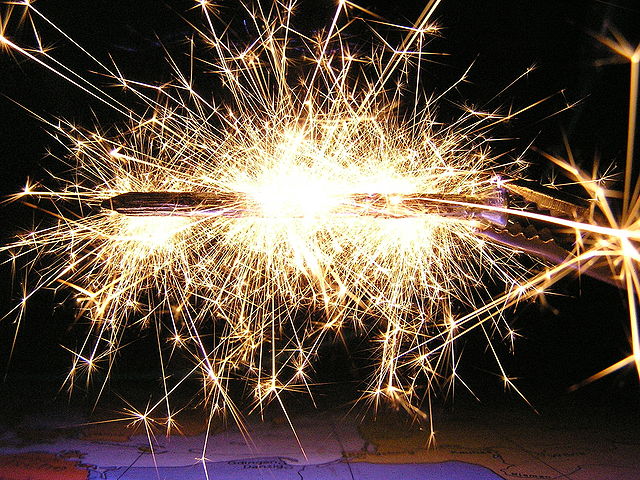 New Enzyme Turns Air into Electricity. Credit: MdE / Wikimedia Commons / CC BY-SA 3.0
New Enzyme Turns Air into Electricity. Credit: MdE / Wikimedia Commons / CC BY-SA 3.0Researchers have recently found a new enzyme that turns atmospheric hydrogen into electricity. The research published in the journal Nature explains atmospheric hydrogen oxidation by enzymes.
The research team, led by Dr. Rhys Grinter, Ph.D. student Ashleigh Kropp, and Professor Chris Greening, produced and analyzed the hydrogen-consuming enzyme from a common soil bacterium.
Their recent work has demonstrated that numerous bacteria, including those in Antarctic soils, volcanic craters, and the deep ocean, use trace amounts of hydrogen in the air to grow and survive.
Professor Greening said, “We’ve known for some time that bacteria can use the trace hydrogen in the air as a source of energy to help them grow and survive, but we didn’t know how they did this until now.”
An enzyme named “Huc” is used by the bacterium
A newly discovered enzyme, dubbed Huc, enables the bacterium Mycobacterium smegmatis to thrive in extreme and nutrient-poor environments by extracting energy from atmospheric hydrogen.
Huc could potentially power small portable devices such as biometric sensors, digital clocks, and calculators, by utilizing air, according to microbiologist Rhys Grinter from Monash University in Australia.
Moreover, Huc can generate more electrical current with increased hydrogen concentration, making it a potential energy source for fuel cells to power more complex devices like smartwatches, smartphones, and even cars.
Mycobacterium smegmatis, a nonpathogenic bacterium, is widely used in labs to study its pathogenic relative, Mycobacterium tuberculosis. Found globally in soil, it can produce energy from trace hydrogen in the air. This enables it to survive in extreme environments, such as Antarctic soils and volcanic craters, according to researchers.
Charged ions of nickel and iron
 FTIR analysis of Huc in the presence of ambient air, N2, or H2. Credit: Nature / CC BY 4.0
FTIR analysis of Huc in the presence of ambient air, N2, or H2. Credit: Nature / CC BY 4.0Scientists used chromatography, a lab technique that separates components of a mixture, to isolate the Huc enzyme that enables M. smegmatis to generate an electric current.
The atomic structure of the enzyme was investigated using cryo-electron microscopy, a technique that earned the creators the 2017 Nobel Prize in Chemistry.
Moreover, by beaming electrons onto a frozen Huc sample from M. smegmatis, the researchers mapped out the enzyme’s atomic structure and its electrical pathways.
The team found that the active site of Huc contains nickel and iron ions that trap hydrogen molecules and strip them of their electrons, generating a flowing stream of electrons to produce the current.
The nickel ion within Huc absorbs electrons which are then transferred to the enzyme’s surface by clusters of iron and sulfur ions acting as a molecular wire. By immobilizing Huc on an electrode, the electrons can flow to generate an electric current, Grinter explained.
Further experiments have shown that Huc can survive freezing or heating up to 176 degrees Fahrenheit, remain stable over time, and consume hydrogen in very low concentrations.
The researchers suggest that these properties, combined with M. smegmatis’ ease of cultivation and abundance, make Huc an ideal candidate for use in organic batteries.

 1 year ago
103
1 year ago
103











 English (US)
English (US)